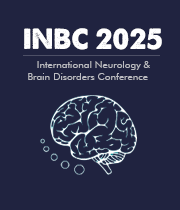Title : Peripheral nerve injury does not alter VGluT1 synaptic density on Isl1+ premotor interneurons
Abstract:
Peripheral nerve transection results in the permanent loss of sensory muscle afferent synapses that, otherwise, provide monosynaptic input to motor neurons. This loss in synapses results in persistent motor deficits such as the absence of the stretch reflex and occurs independent of successful peripheral axon regeneration. Interestingly, the same parent sensory axons double their number of boutons in the deep dorsal horn of the spinal cord, where a heterogeneous group of premotor interneurons reside. The objective of this project was to identify if a specific group of interneurons receives this increased synaptic drive with the future goal of determining its functional consequence, such as facilitating increased muscle co-contraction also known to occur post-injury.
We focused on dI3 interneurons that express the Islet 1 transcription factor (Isl1+). These cells were selected because they are glutamatergic interneurons known to project to motor neurons, receive muscle afferent input (defined by expression of the Vesicular Glutamate Transporter isoform 1 (VGluT1)), and coordinate motor output. We hypothesized that peripheral nerve injury would significantly increase VGLuT1 synaptic density on Isl1+ premotor interneurons.
Adult Isl1tdTomato mice underwent either sciatic nerve transection or sham surgery. Three months later, post regeneration, we perfused the animals, collected lumbar spinal cord, and processed tissue to identify interneurons expressing the tdTomato reporter protein. We then conducted immunohistochemistry to label sensory synapses expressing VGluT1. 3D reconstructions were generated from confocal image stacks to quantify VGluT1 synaptic inputs on the soma and proximal dendrites of Isl1 interneurons and compared between injured and control animals.
Against our hypothesis, our analysis revealed no significant difference in synaptic density on Isl1+ interneurons between nerve-injured and sham groups. Though a negative result, this finding clarifies which cells do not show increased synaptic drive post-injury, allowing focus on other interneuron subtypes involved in motor control for future studies.



